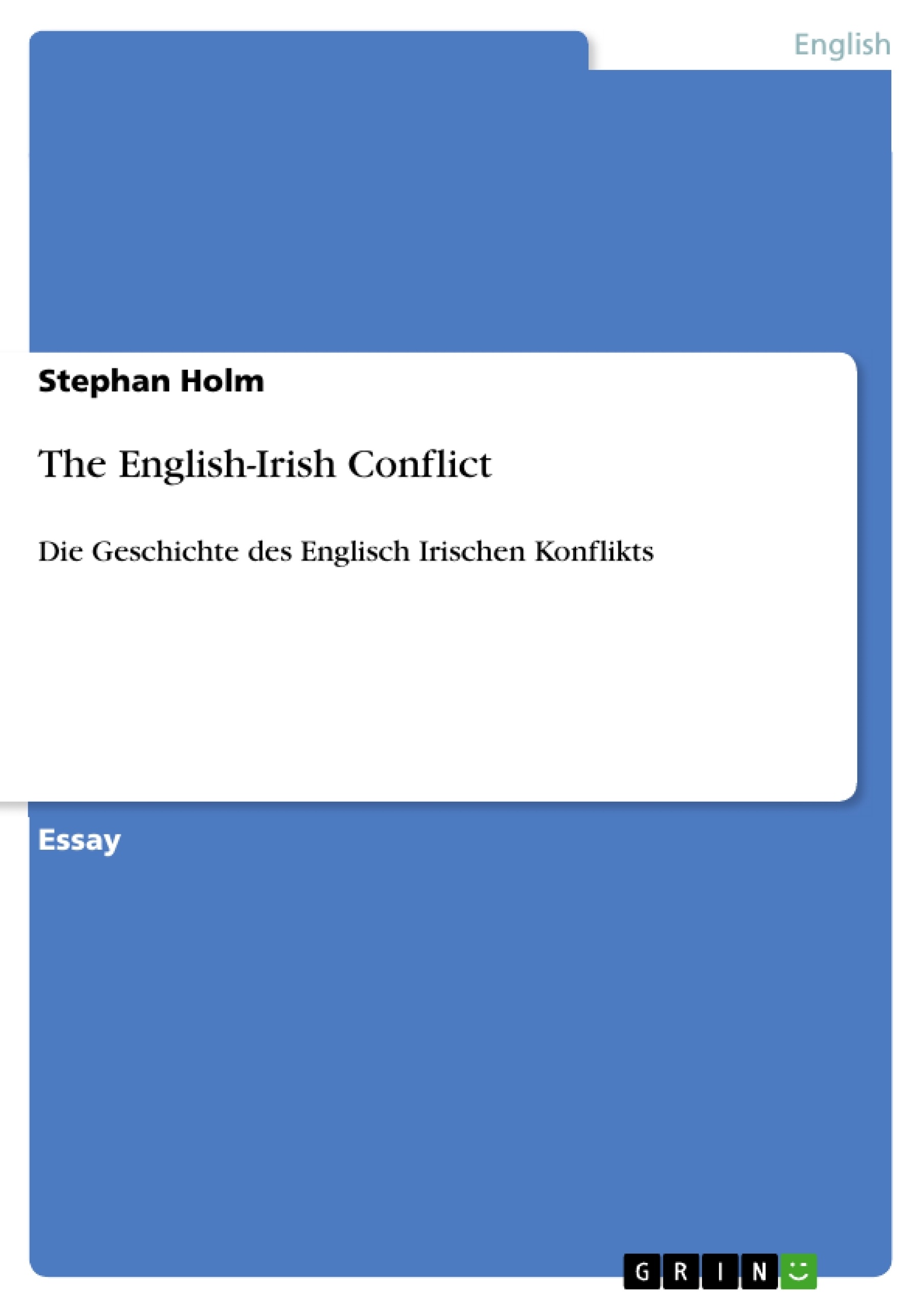„Geography gives us our neighbours, but history gives us our enemies.“ This is an Irish saying which describes the love-hate relationship between Ireland and England in a few words. Though England is Ireland’s closest neighbour neither side has ever tried to understand the other one. Irish people make a difference between England, Scotland and Wales. While the Scots and Welsh are seen as a part of the Celtic family the English are the traditional enemy. Still today many Irish feel angry about the way they were treated by the English and about the English attitude towards Ireland these days. There is still a certain degree of racial prejudice since many English people don’t know a lot about Ireland’s history and the English-Irish conflict. However, you cannot really talk of hate between the two countries. The people get on quite well with each other as long as it doesn’t come to politics. The ending of the violence in Northern Ireland gives strong hope that economic, political and social relations between Ireland and England will improve a lot in the near future.
Table of Contents
- Introduction
- History of the Conflict
- English Rule in Ireland (12th-16th Centuries)
- Plantations and Rebellions (16th-17th Centuries)
- Penal Laws and Emigration (17th-18th Centuries)
- The Great Famine (1845-1849)
- Home Rule and the Easter Rising (1882-1916)
- War of Independence and Partition (1919-1923)
- The Troubles in Northern Ireland (1970s-1990s)
Objectives and Key Themes
This text aims to provide a historical overview of the English-Irish conflict, exploring its origins, key events, and lasting impact. The work examines the complex relationship between England and Ireland, highlighting the multifaceted nature of their interactions throughout history.
- The evolution of English rule in Ireland and its consequences.
- The recurring cycle of rebellion and repression.
- The role of religious and political differences in fueling the conflict.
- The devastating impact of the Great Famine.
- The long-term effects of partition and "The Troubles."
Chapter Summaries
Introduction: This introductory section sets the stage by highlighting the complex and often contradictory relationship between England and Ireland, characterized by a blend of animosity and uneasy coexistence. It emphasizes the historical roots of mistrust and misunderstanding, particularly the lingering resentment stemming from past injustices, while simultaneously suggesting the potential for improved relations in the future following the end of the violence in Northern Ireland.
History of the Conflict: This chapter provides a broad chronological overview of the conflict. It begins with the English invasion in the 12th century and traces the gradual expansion of English control over Ireland, marked by periods of resistance, rebellion, and systematic oppression. The chapter details the implementation of penal laws against the Catholic Irish population, the devastating effects of the Great Famine, and the persistent struggle for Irish independence culminating in the Easter Rising and the War of Independence. The ultimate partition of Ireland and the subsequent decades of conflict in Northern Ireland ("The Troubles") are briefly touched upon, setting the stage for a deeper examination of specific events in subsequent sections. The narrative highlights the long and often brutal history of English dominion over Ireland and the lasting consequences of this relationship on both societies.
Keywords
English-Irish conflict, Irish history, British rule in Ireland, Irish nationalism, rebellion, partition, Great Famine, The Troubles, Northern Ireland, religious conflict, political conflict, national identity.
Frequently Asked Questions: A Comprehensive Language Preview of the English-Irish Conflict
What is the purpose of this text?
This text offers a historical overview of the English-Irish conflict, exploring its origins, key events, and lasting impact. It examines the complex relationship between England and Ireland, highlighting the multifaceted nature of their interactions throughout history.
What topics are covered in the text?
The text covers a wide range of topics, including the evolution of English rule in Ireland, recurring cycles of rebellion and repression, the role of religious and political differences in fueling the conflict, the devastating impact of the Great Famine, and the long-term effects of partition and "The Troubles" in Northern Ireland.
What is included in the Table of Contents?
The table of contents includes an introduction, a detailed section on the history of the conflict (spanning from English rule in the 12th-16th centuries to the Troubles in the 1970s-1990s), objectives and key themes, chapter summaries, and keywords.
What are the key themes explored in the text?
Key themes include the evolution of English rule and its consequences, the recurring cycle of rebellion and repression, the influence of religious and political differences, the devastating impact of the Great Famine, and the lasting effects of partition and the conflict in Northern Ireland.
What does the chapter summary of the "Introduction" section cover?
The introduction sets the stage by highlighting the complex relationship between England and Ireland, characterized by both animosity and uneasy coexistence. It emphasizes historical roots of mistrust and the potential for improved relations following the end of violence in Northern Ireland.
What does the chapter summary of the "History of the Conflict" section cover?
This chapter provides a chronological overview, starting with the English invasion in the 12th century and tracing the expansion of English control. It details periods of resistance, rebellion, systematic oppression, penal laws, the Great Famine, the struggle for independence (including the Easter Rising and War of Independence), partition, and "The Troubles". The summary emphasizes the long history of English dominion and its lasting consequences.
What are the keywords associated with this text?
Keywords include: English-Irish conflict, Irish history, British rule in Ireland, Irish nationalism, rebellion, partition, Great Famine, The Troubles, Northern Ireland, religious conflict, political conflict, and national identity.
What is the intended audience for this text?
While not explicitly stated, the comprehensive nature and academic approach suggest the text is intended for academic use, likely students and researchers studying Irish history and the English-Irish conflict.
- Quote paper
- Stephan Holm (Author), 2003, The English-Irish Conflict, Munich, GRIN Verlag, https://www.grin.com/document/120037




